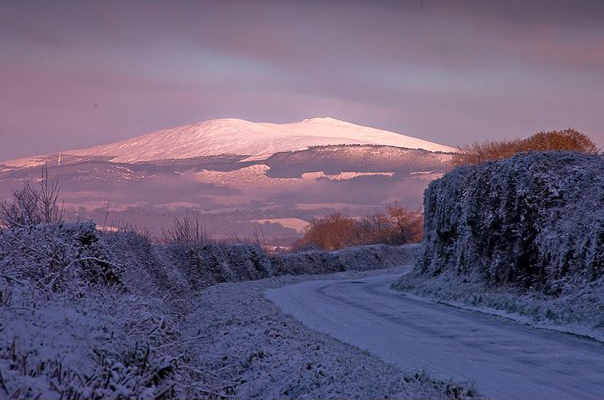Kilcavan, County Wicklow on:
[Wikipedia]
[Google]
[Amazon]
 Kilcavan is an area in south
Kilcavan is an area in south
 Kilcavan is an area in south
Kilcavan is an area in south County Wicklow
County Wicklow ( ; ) is a Counties of Ireland, county in Republic of Ireland, Ireland. The last of the traditional 32 counties, having been formed as late as 1606 in Ireland, 1606, it is part of the Eastern and Midland Region and the Provinces ...
in Ireland, approximately north-east of Carnew
Carnew () is a village in County Wicklow, Ireland. It is the most southerly town in Wicklow situated just a mile from the border with County Wexford. For historical reasons it has often been described as "a Protestant enclave". The village is ...
. The area, comprising the townland
A townland (; Ulster-Scots: ''toonlann'') is a traditional small land division used in Ireland and in the Western Isles of Scotland, typically covering . The townland system is of medieval Gaelic origin, predating the Norman invasion, and mo ...
s of Kilcavan Lower and Kilcavan Upper, is located at the southern end of the Wicklow Mountains
The Wicklow Mountains (, archaic: '' Cualu'') form the largest continuous upland area in Ireland. They occupy the whole centre of County Wicklow and stretch outside its borders into the counties of Dublin, Wexford and Carlow. Where the mountai ...
.
Name
TheIrish language
Irish (Standard Irish: ), also known as Irish Gaelic or simply Gaelic ( ), is a Celtic language of the Indo-European language family. It is a member of the Goidelic languages of the Insular Celtic sub branch of the family and is indigenous ...
name of the area is ''Cill Chaomháin'', referring to a church (''cill'') associated with a person named Caomhán. Early anglicised versions of this name include a reference, in the Calendar of Patent Rolls of James I (1608), to Killkavane. Other references include Kilkevine (1636), Killcavan (), and Kilkeavan (1667). 19th century records, attributed to place-name archivist John O'Donovan John O'Donovan may refer to:
*John O'Donovan (scholar) (1806–1861), Irish language scholar and place-name expert
*John O'Donovan (politician) (1908–1982), Irish TD and Senator
*John O'Donovan (police commissioner) (1858–1927), New Zealand pol ...
, refer to ''Cill Caemhain'' or "St Cavan's church".
History
Former church
Near the R748 road between Carnew and the Kilcavan Gap, in Kilcavan Upper, is the site of an ecclesiastical enclosure. This circular enclosure is marked as the site of Kilcavan Church on mid-19th century Ordnance Survey maps. Today there is very little left of the church except scattered granite stones and a "crude Latin cross (WI047-006003-)" which is incorporated in a field boundary to the south of the church site. Kilcavan Church was named after Saint Caomháin, who founded the monastery of Airdne Coemain, now Ardcavan, County Wexford, . Caomháin may be the same priest named Caeman of Dairinis in other sources, who Saint Finnian of Clonard, visited before he went to Aghowle.Quarrying
From at least 1800 until the early 1940s, theslate
Slate is a fine-grained, foliated, homogeneous, metamorphic rock derived from an original shale-type sedimentary rock composed of clay or volcanic ash through low-grade, regional metamorphism. It is the finest-grained foliated metamorphic ro ...
quarries of Kilcavan provided a source of employment for local inhabitants. The extracted slate, which was "of a dark colour", was mainly exported, but also used locally and elsewhere within Ireland.
In addition to slate and stone for building, the quarries at Kilcavan also exported the component used as a base for the "Battleship Gray
Variations of gray or grey include achromatic grayscale shades, which lie exactly between white and black, and nearby colors with low colorfulness. A selection of a number of these various colors is shown below.
Chart of computer web color g ...
" paint used on warships. The slate quarry closed in 1942.
Land use
In the very early nineteenth century the area was in the control of Lord Fitzwilliam and was originally leased only toProtestants
Protestantism is a branch of Christianity that emphasizes Justification (theology), justification of sinners Sola fide, through faith alone, the teaching that Salvation in Christianity, salvation comes by unmerited Grace in Christianity, divin ...
. This changed after 1808, and Catholics
The Catholic Church (), also known as the Roman Catholic Church, is the largest Christian church, with 1.27 to 1.41 billion baptized Catholics worldwide as of 2025. It is among the world's oldest and largest international institut ...
were given the chance to sub-lease land.
References
{{coord, 52.731, -6.476, region:IE, display=title Townlands of County Wicklow